| Title | Silent Hill f |
| Released | Sept 22, 2025 (Deluxe) Sept 25, 2025 (Standard) |
| Developer(s): | NeoBards Entertainment |
| Publisher(s): | Konami |
| Platform(s): | |
| Genre | Action, Horror, Psychological Horror |
| Rating | M |
| Price | $69.99 (Standard) $79.99 (Deluxe) |
| Proton | Proton 9.0-4 |
Completed on PC on every difficulty
HowLongToBeat Time: 29½ Hours (Completionist) | My Clear Time: 32 hours
Background
Silent Hill f, developed by NeoBards Entertainment and released September 2025, marks a triumphant return to Eastern-led development for the series, the first since Silent Hill 4: The Room in 2004.
Under Konami’s renewed vision, the game embraces the series’ ethos of psychological horror, combining atmosphere, narrative depth, and subtle terror. Its core concept, “Beauty in Terror,” transforms a 1960s Japanese town into an uncanny nightmare where every shrine, alley, and home pulses with quiet menace.
On designing Silent Hill f, director Al Yang noted it was ‘keeping in tradition with the Silent Hill series, our protagonist Hinako was designed to be an ordinary person, however it was crucial for us to have fun and interesting gameplay’ (Designing The World of Silent Hill f, 2025).
The development team for Silent Hill f includes:
- Ryukishi07 (Writer): When They Cry series, Loopers
- Al Yang (Director): Final Fantasy XV: Pocket Edition, Dead Rising Deluxe Remaster
- kera, Box Shih (Monster Designer / Artist, Art Director)
- kera: Spirt Hunter series, Lord of Vermillion
- Shih: Gravity Rush 2, Days Gone
- Akira Yamaoka, dai, Kouichi Sakita, Kensuke Inage (Composers)
- Yamaoka: Silent Hill 1-4, The Silver Case, Rumble Roses XX
- dai: Higurashi Daybreak, Ribbon of Green, Himawari: The Sunflower
- Sakita: Neptunia ReVerse, Mad Rat Dead, Mary Skelter: Finale
- Inage: Yakuza 0, Dynasty Warriors 6, Tekken 7
- Albert Lee, Motoi Okamoto (Producers)
- Lee: 007: Quantum of Solace, Final Fantasy XV: Pocket Edition
- Okamoto: Luigi’s Mansion, Silent Hill 2 (2024), Pikmen 1 & 2
Experience
My journey with Silent Hill began on Christmas 2007, when the PSP Battlefront: Renegade Squadron bundle was gifted to me with Silent Hill: Origins. Its creeping dread hooked me, leading me to the original Silent Hill, my series favorite, and later to Silent Hill 4: The Room, whose claustrophobic horror rattled me months ago.
Homecoming and Book of Memories didn’t quite land, but Konami’s first Transmission stream for Silent Hill f, with its 1960s setting and Ryukishi07’s narrative, captivated me. kera’s grotesque yet elegant monster designs promised a fresh terror.
I grabbed the deluxe edition on day one, ready to explore Hinako Shimizu’s world and face a psychological gauntlet.
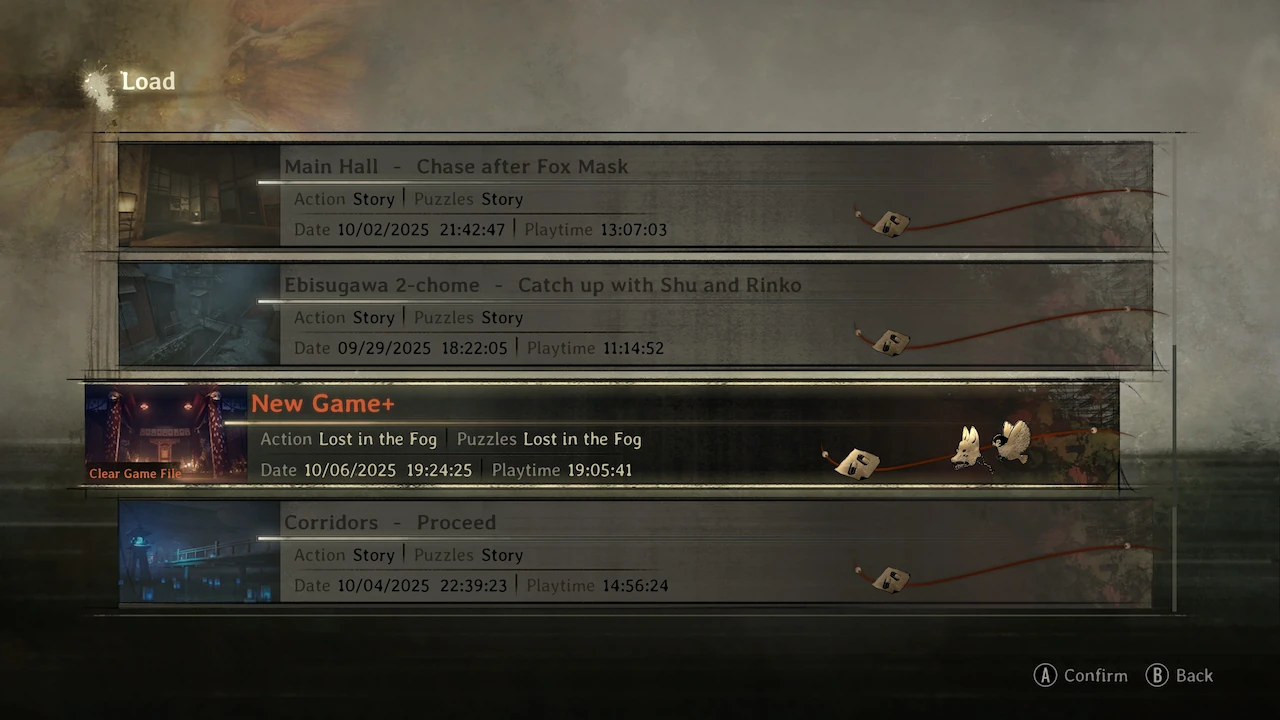
Some truths remain beneath the fog.
Impressions
Introduction
Silent Hill f immerses you in a 1960s Japanese town, where superstition and secrets fester beneath tradition’s veneer. You guide Hinako Shimizu through narrow alleys, weathered homes, and ominous shrines, each space alive with subtle dread.
The “Beauty in Terror” ethos weaves serene moments, cherry blossoms drifting in fog, with visceral horror where shadows twist and ghostly figures linger. Ryukishi07’s narrative unfolds through environmental cues, scattered documents, and player choices, with New Game Plus unlocking endings that reframe Hinako’s journey.
This is more than a horror story. It’s a lived nightmare that lingers long after the screen fades. The visual novel-inspired route structure ensures every choice feels meaningful, keeping players engaged across multiple playthroughs.
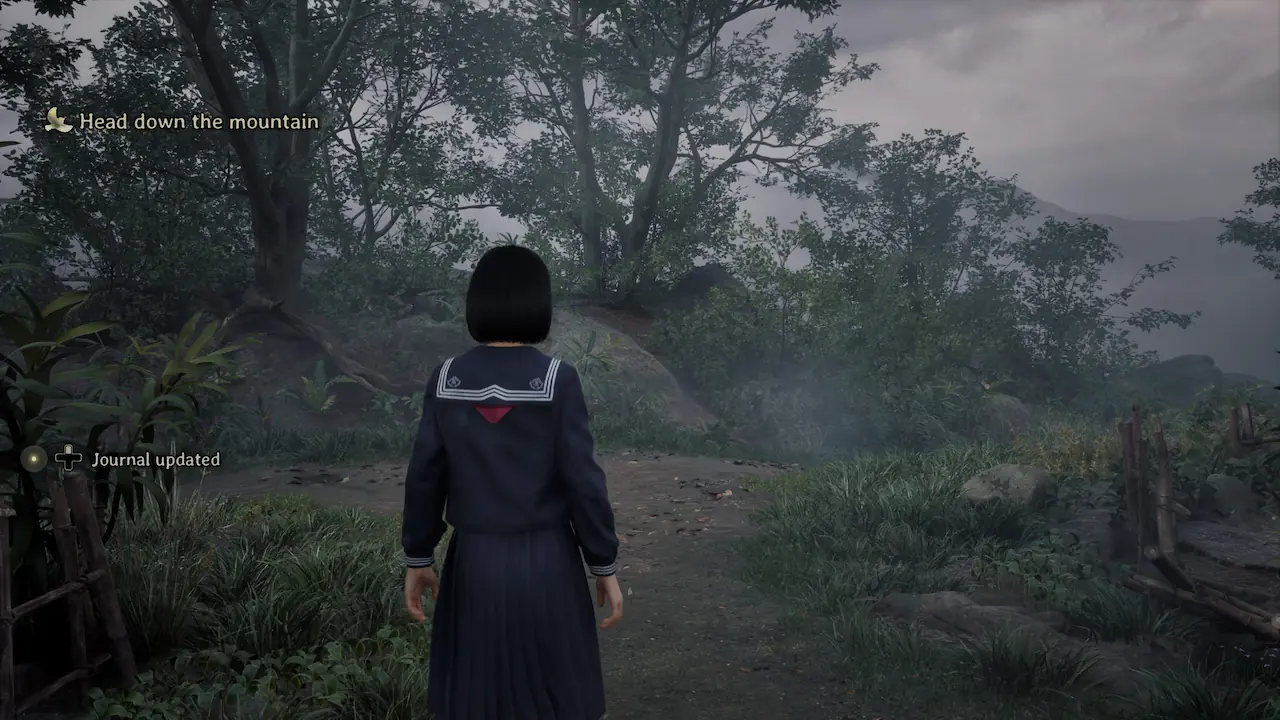
Each step stirs the town’s secrets.
Gameplay & Mechanics
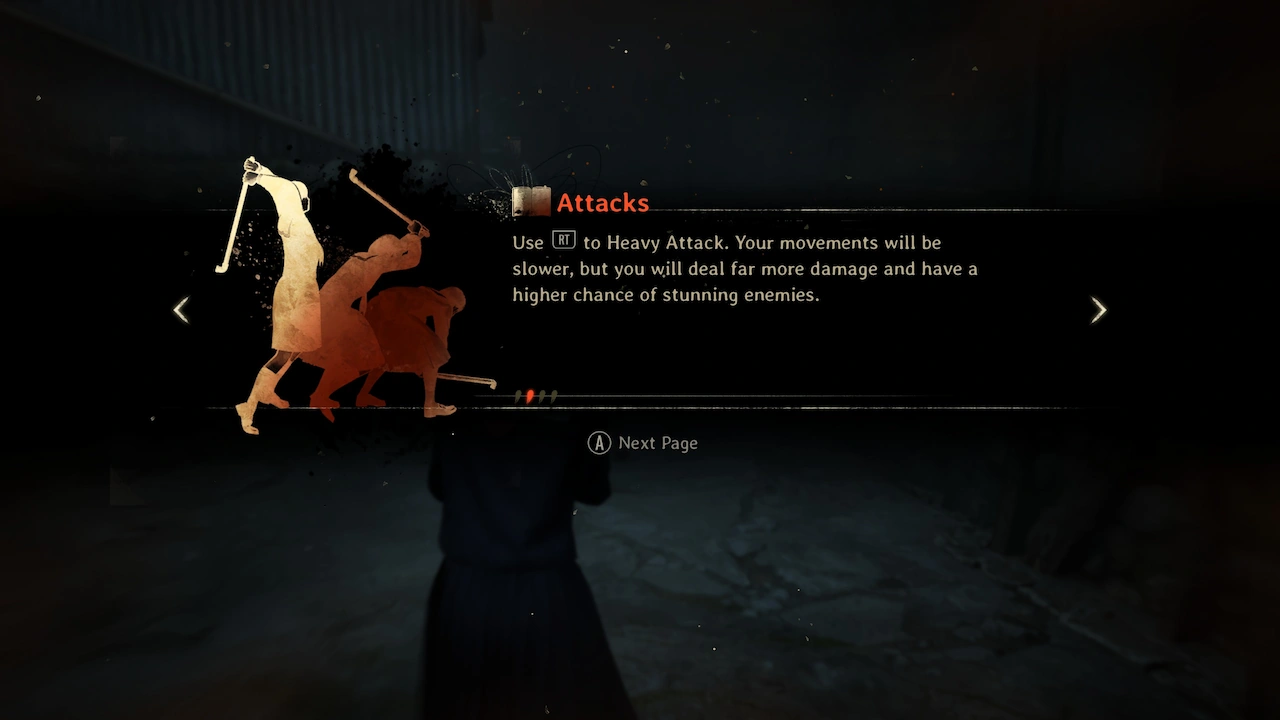
Every swing risks everything.
Combat & Tension
Combat is methodical, not frantic. Weapons degrade, forcing players to balance attack, evasion, and Hinako’s stamina, whether using rusted pipes or ceremonial blades. kera’s enemies are grotesque yet hauntingly beautiful and move unpredictably in tight spaces such as shrine corridors or foggy alleys.
Their erratic patterns and unsettling designs, such as a spectral figure with flowing robes and a contorted face, make every encounter a test of timing and nerve, echoing Silent Hill 4’s desperate, vulnerable fights.
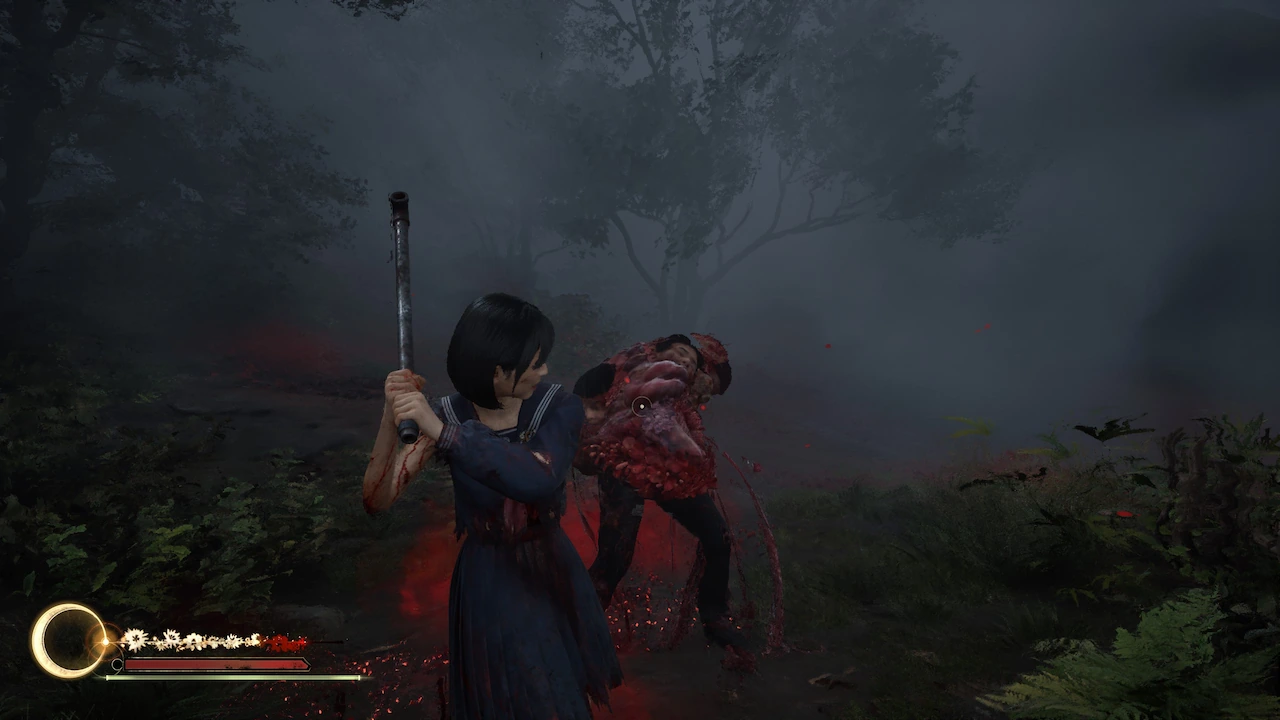
A focus swing demands timing, not panic.
Focus
Hinako’s Focus Ability depletes a dedicated meter when active and reveals the Otherworld’s illusions. It enables charged attacks, precise dodges, counters, and some area puzzle solutions. This makes focus blend offensive, defensive and utility.
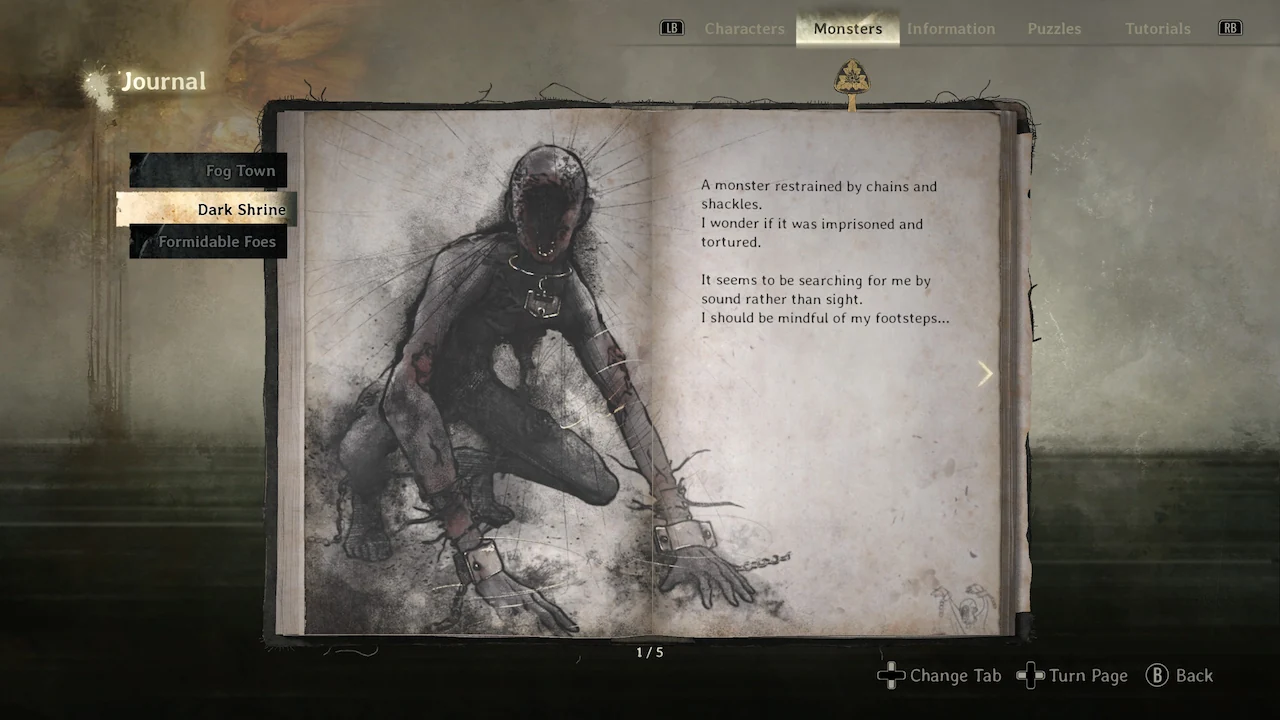
Even their steps shape your strategy.
Enemy Behavior
Enemy functionality aligns with their designs. The faceless Dark Shrine monster tracks Hinako by sound, stalking her footsteps, reminiscent of Resident Evil 4’s Garrador. This forces careful movement, amplifying tension through meticulous design.
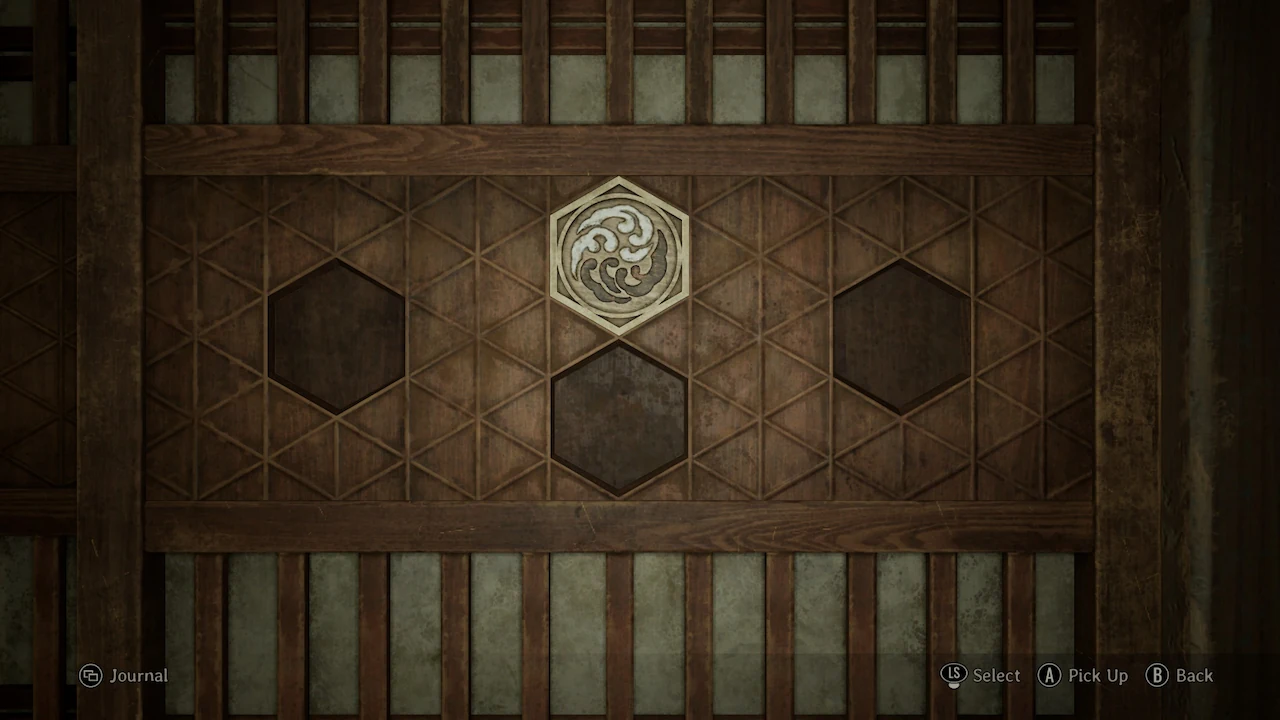
Choices shift the path forward.
Puzzles
Puzzles are tactile and lore-driven, from Shinto-inspired riddles to aligning cryptic symbols on weathered shrines. Hinako’s journal tracks clues mid-puzzle, offering guidance without hand-holding. Solutions shift based on difficulty and story route, tying gameplay to narrative and rewarding replay with fresh challenges.
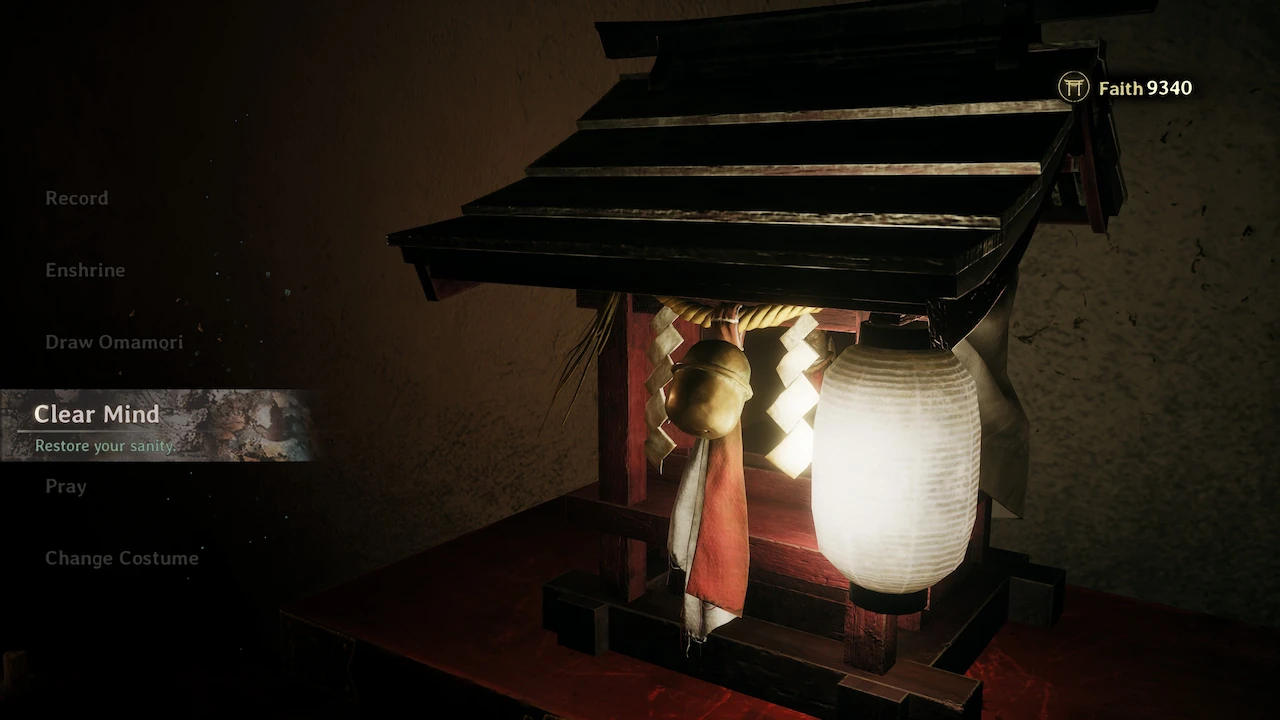
Salvation demands sacrifice.
Hokora Shrines
Hokora Shrines, small Shinto altars, act as save points, sanity hubs, and resource exchanges. Omamori, protective charms, grant passive bonuses or resistances, while Ema, wooden prayer plaques, function as stat upgrades when offered at the shrine. Their scarcity turns saving and upgrading into a ritualistic choice, blending folklore with survival’s weight.
Story & Writing
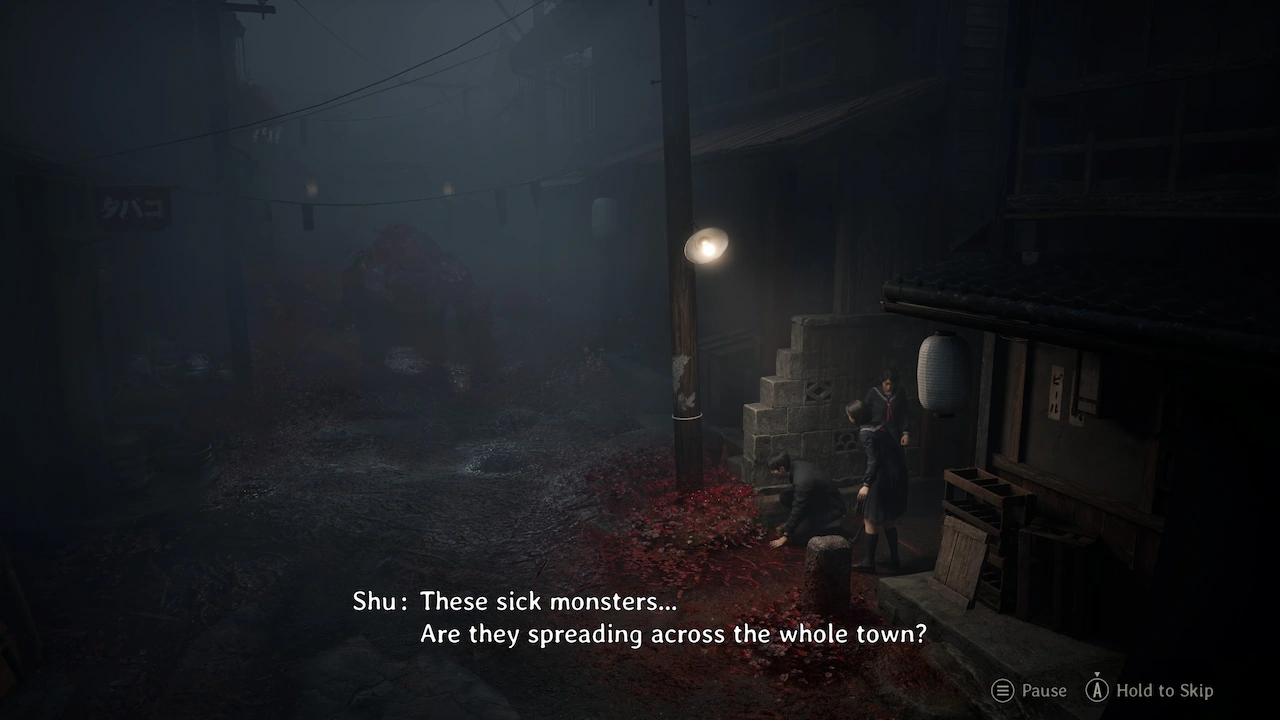
Shu’s dread mirrors the town’s decay.
Silent Hill f follows Hinako Shimizu through a 1960s Japanese town steeped in superstition and rigid social norms. Ryukishi07’s narrative, rooted in visual novel expertise, explores “Beauty in Terror” through Hinako’s struggle against jealousy, patriarchal control, and spectral forces. Her past, marked by child neglect and an abusive father, bleeds into the town’s horrors where spirits and human cruelty blur.
Themes of free will, identity, and individuality versus collectivism anchor a coming-of-age tale that is as human as it is haunting. The story unfolds through player choices, environmental clues, and branching paths, with Normal, Bad, Good, and True Endings offering distinct resolutions: despair, redemption, or self-discovery.
Like Silent Hill 4‘s intensely personal and often claustrophobic horror, the town is a canvas for Hinako’s psyche, a bold choice that may divide purists but pushes the series forward. In fact, this game serves as the ultimate litmus test for the fandom.
If your appreciation for Silent Hill only runs skin-deep, focused solely on the surface-level aesthetics, this deliberate departure from the expected formula may leave you utterly bewildered. For those who grasp the series’ deeper psychological ethos and thematic innovation, however, this narrative is a triumph.
The branching paths and route-dependent storytelling feel distinctly visual novel–like. This design makes every choice meaningful and keeps players invested across multiple playthroughs, making the game feel fresh in ways I didn’t realize I wanted.
Art & Audio
Silent Hill f’s visuals blend elegance and decay. Fog-shrouded streets, weathered shrines, and intimate homes shift. Shadows stretch, lanterns flicker, walls bleed. kera’s monsters, such as spectral figures with flowing robes and contorted faces, are grotesque yet alluring.Unreal Engine 5’s lighting dazzles, though occasional shader glitches slightly disrupt immersion. Environments echo Silent Hill 4’s rotting corridors but are steeped in Japanese aesthetics.
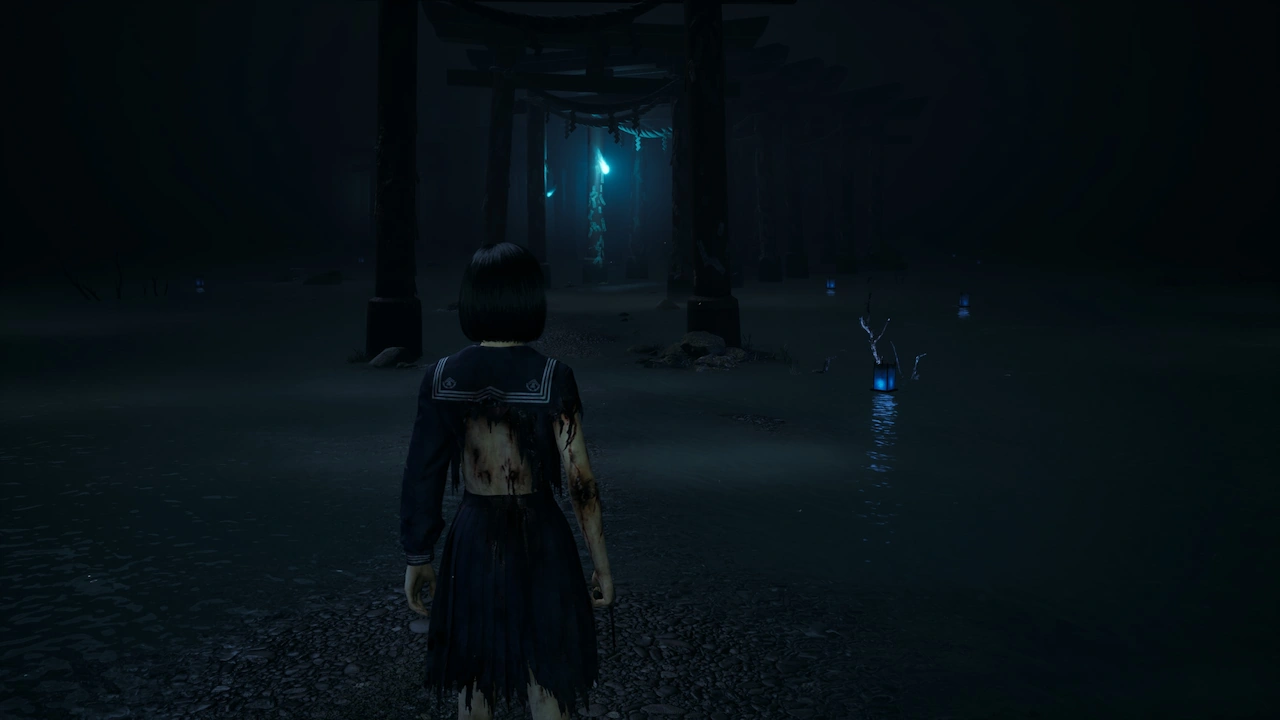
Silence screams louder than fear.
Sound design is masterful. Creaks, whispers, and shrieks weave dread, with diegetic and non-diegetic audio blurring to mirror Hinako’s unraveling psyche. Akira Yamaoka, dai, and Kensuke Inage’s score amplifies tension and beauty.
Standout tracks:
Dizziness Drawn to a Faint Flame
A haunting blend of melancholic strings and industrial hums, this track mirrors Hinako’s descent into the town’s abyss. Its soft vocals linger during exploration, a lullaby for a fractured world.
Gloomy
Sharp piano keys and eastern zither hums weave lingering dread, punctuated by sparse percussion. Played in fog-choked transitions, it’s a subtle blade, slicing through calm to reveal horror.
The Bird’s Lament
Sorrowful vocals soar over mournful strings, erupting into epic guitar solos in the end credits. It’s a cathartic requiem, leaving players haunted yet fulfilled.
Unique Features & Mechanics
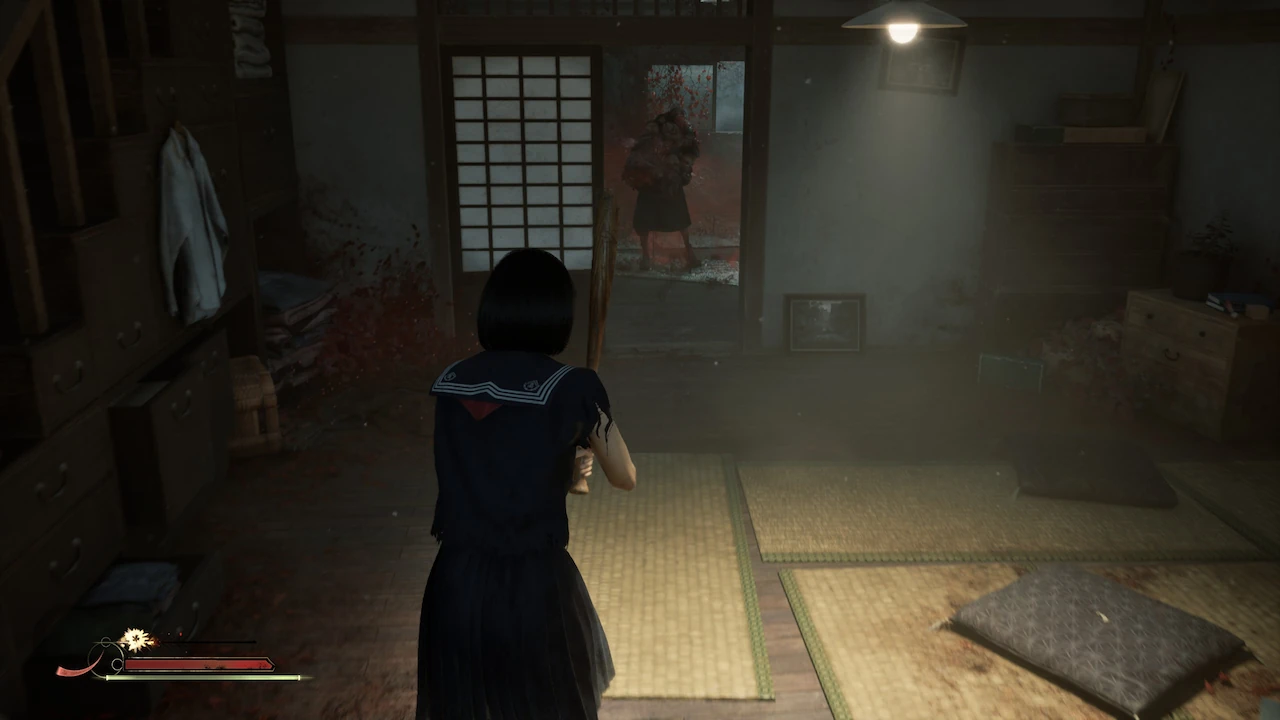
A fragile bat forces desperate choices.
Weapon Durability
Weapons degrade with use, forcing careful planning and encouraging evasion over constant fighting. This rekindles the vulnerability of the series’ early years.
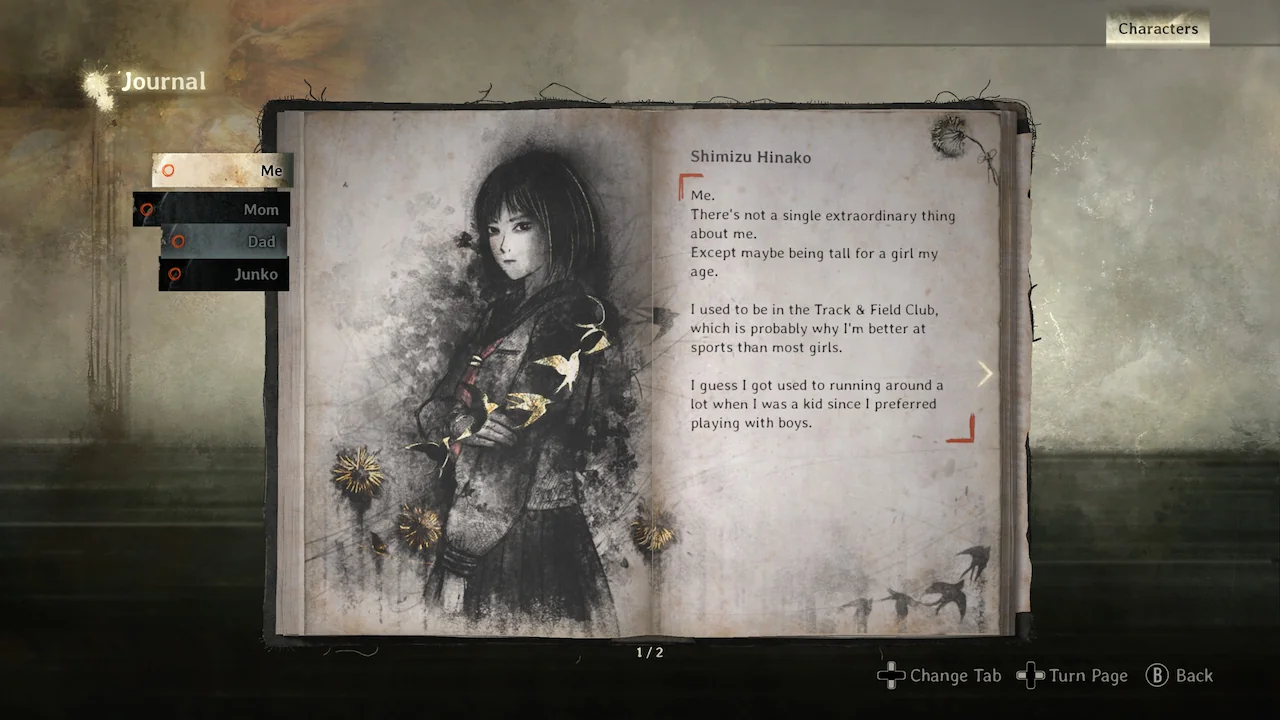
Sketches shift with every choice.
Dynamic Journal
Hinako’s journal evolves with her perspective. Entries and sketches change based on choices and ending path, making it an emotional and mechanical reflection of progress.
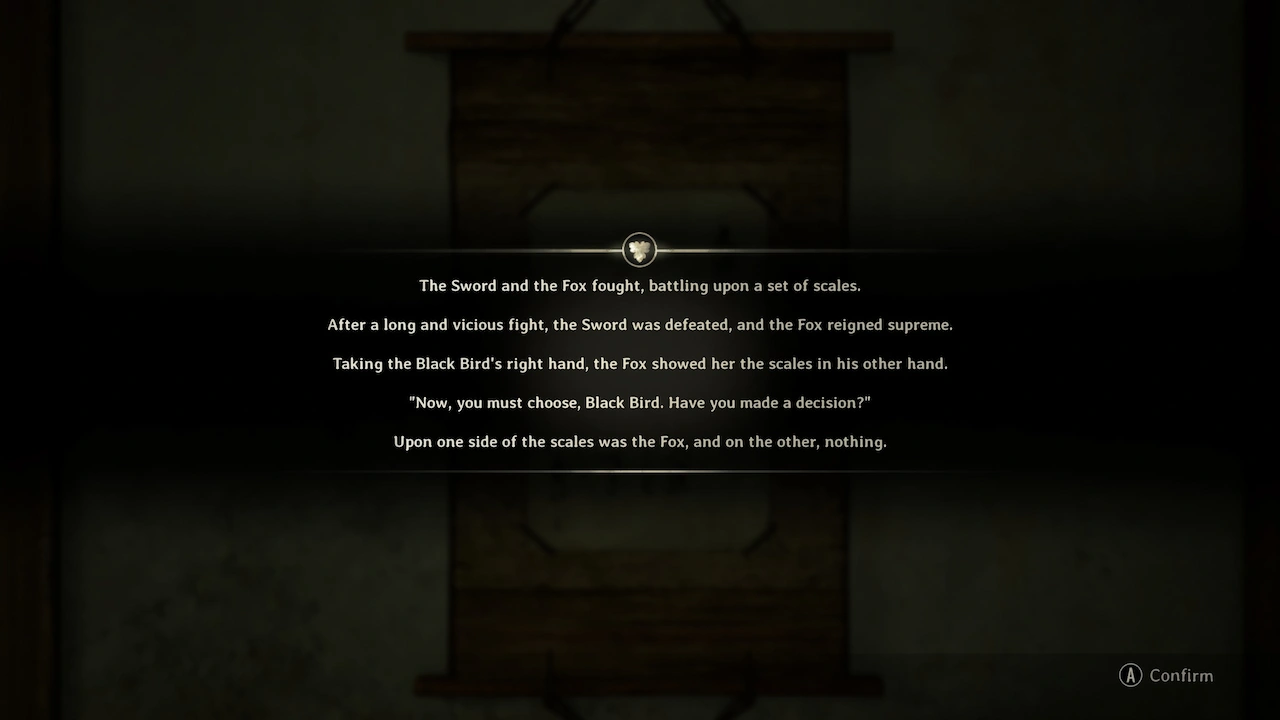
Solutions shift with every route.
Adaptive Puzzles
Puzzle solutions shift according to difficulty and narrative route, making repeat runs genuinely new experiences. This ties gameplay directly to story context.
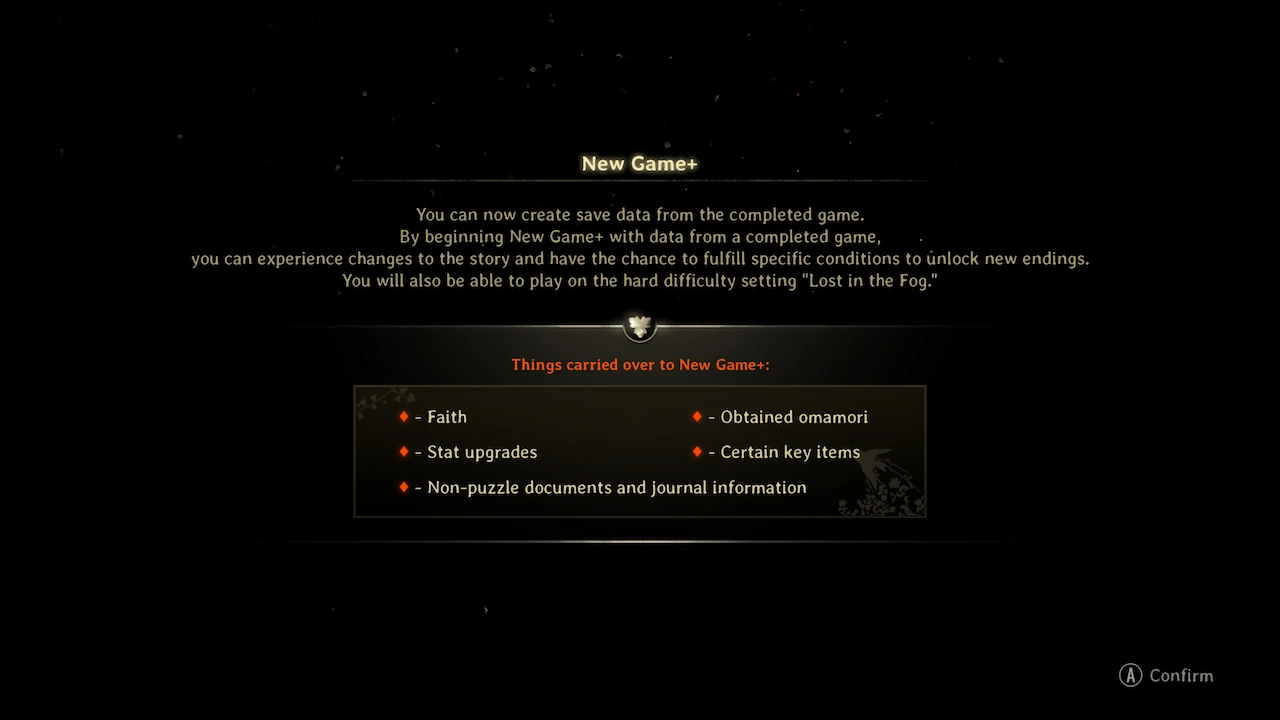
Choices unlock new paths, new truths.
New Game Plus
The first run establishes the core narrative. Subsequent playthroughs unlock new dialogue, alternate routes, and expanded lore. Scenes subtly alter, revealing truths only hinted at before.
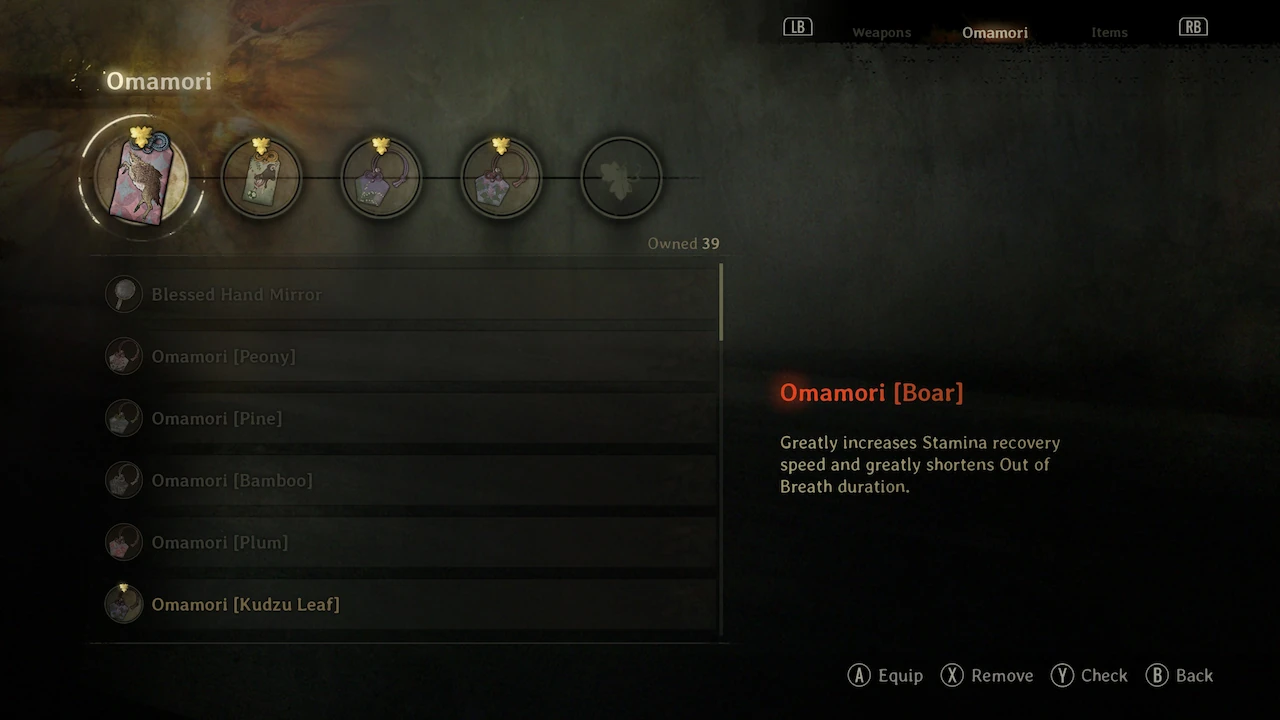
Folklore fuels survival’s edge.
Omamori
Omamori function like equipment modifiers, granting passive bonuses or resistances. Some amplify Focus, others boost stamina or stealth. Mixing sets encourages experimentation across playthroughs.
View Endings Menu
After completing one run, a new menu tracks endings achieved and teases what remains. Minimal UI and heavy implication encourage players to uncover the full spectrum of f’s outcomes.
Seiyuu Performances
Silent Hill f’s voice acting elevates its human horror. The cast blends vulnerability and menace, grounding the supernatural in raw emotion. Even brief interactions feel meaningful, adding tension and emotional texture.
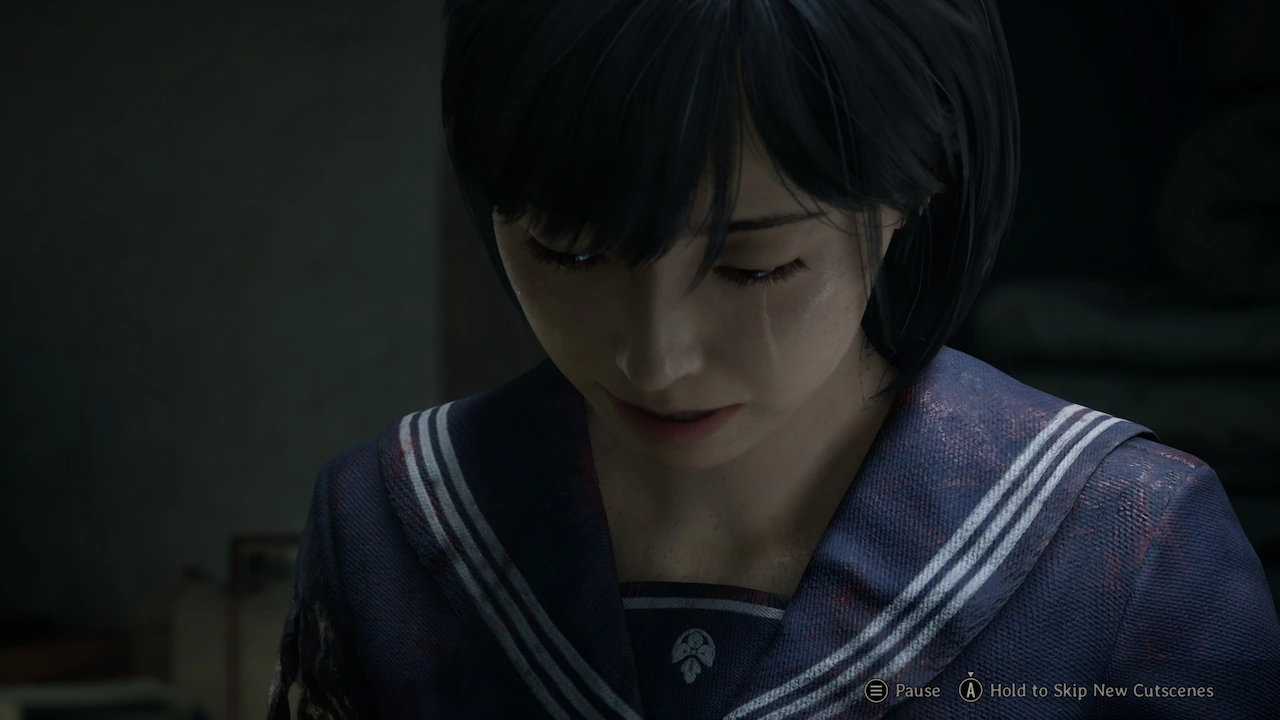
Her voice carries the story where words alone cannot.
- Konatsu Kato (Hinako Shimizu): Silent Hill f
- Natsuki Osaki (Shu Iwai): Silent Hill f
- Yuuka Iijima (Rinko Nishida): Silent Hill f
- Eri Goda (Sakuko Igarashi): Ritas (Dragon Quest VIII), Mirai Saritobi (Naruto), Emi Terasawa (Judgment)
- Nanako Mori (Junko): Gemma (Monster Hunter Wilds), Fabienne (Metaphor: ReFantazio), Coco (Code Vein)
Performance
The first half hour ran smoothly, but in denser areas, framerate dropped sharply even with DLSS on my 3080 Ti 12GB. I followed an optimization guide that reduced shader stutter from Unreal Engine 5 and fixed some crashes. After upgrading my graphics card, I used the same file alongside a different guide and enabled Radeon Chill to cap the game at 60fps, while leaving it uncapped in-game, which further minimized stutter and eliminated crashes entirely.
Verdict
Silent Hill f is a masterpiece of innovation. Ryukishi07’s visual novel-style narrative, kera’s grotesque monster designs, and a haunting 1960s Japanese setting elevate it beyond Origins and Silent Hill 4.
Minor Unreal Engine 5 shader issues and a learning curve don’t dim its brilliance but prevent a perfect score. New Game Plus weaves a web of choices that reframe everything, making f a triumph for Japanese horror and story-driven fans and redefining Silent Hill’s soul.
TLDR
Silent Hill f (PC)
9.5
Near Masterpiece
Summary: Silent Hill f merges beauty, terror, and visual novel-style storytelling into a gripping experience.
Adaptive mechanics and Ryukishi07’s layered writing make it the most well-rounded Silent Hill yet, despite minor technical hiccups.
Tested On
CPU: Ryzen 7 5900X | GPU: AMD RX 9070XT 16GB | RAM: 64GB DDR4 | Storage: Crucial P5 Plus NVMe SSD
OS: Windows 11 x64 | Resolution: 1440p | Settings: High/Custom | Framerate: Uncapped, Radeon Chill: 60FPS


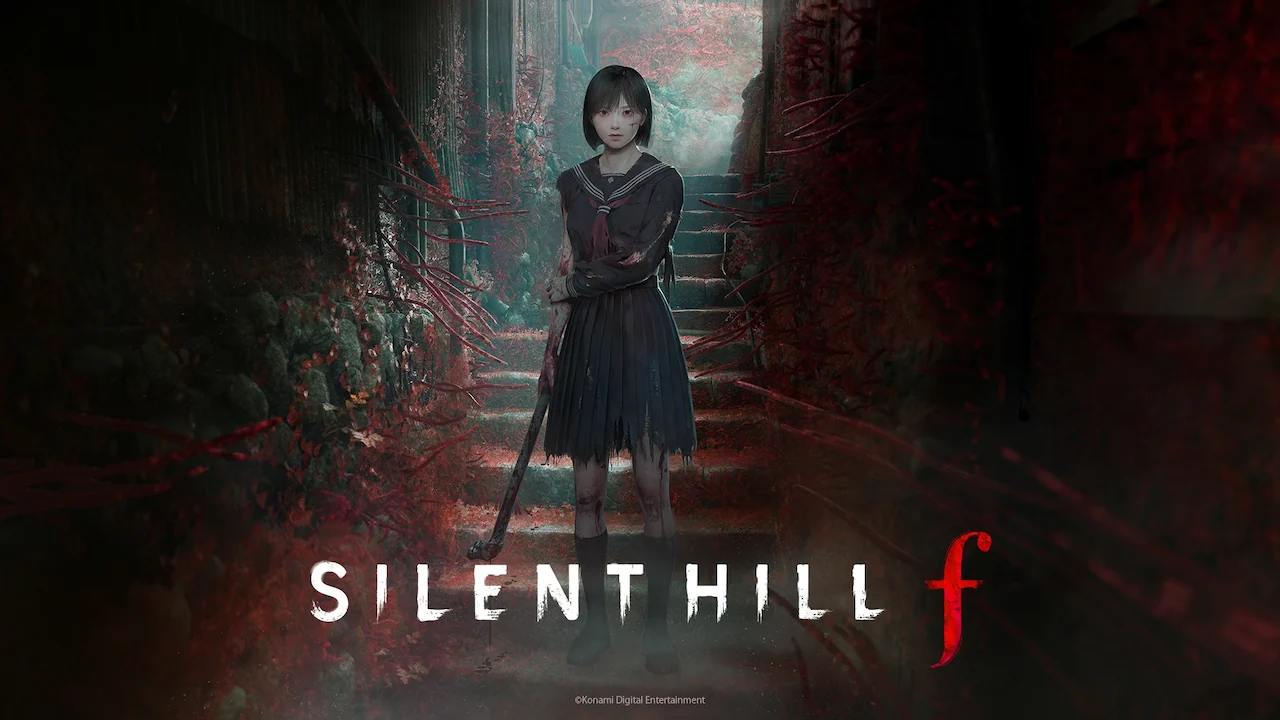
Leave a Reply